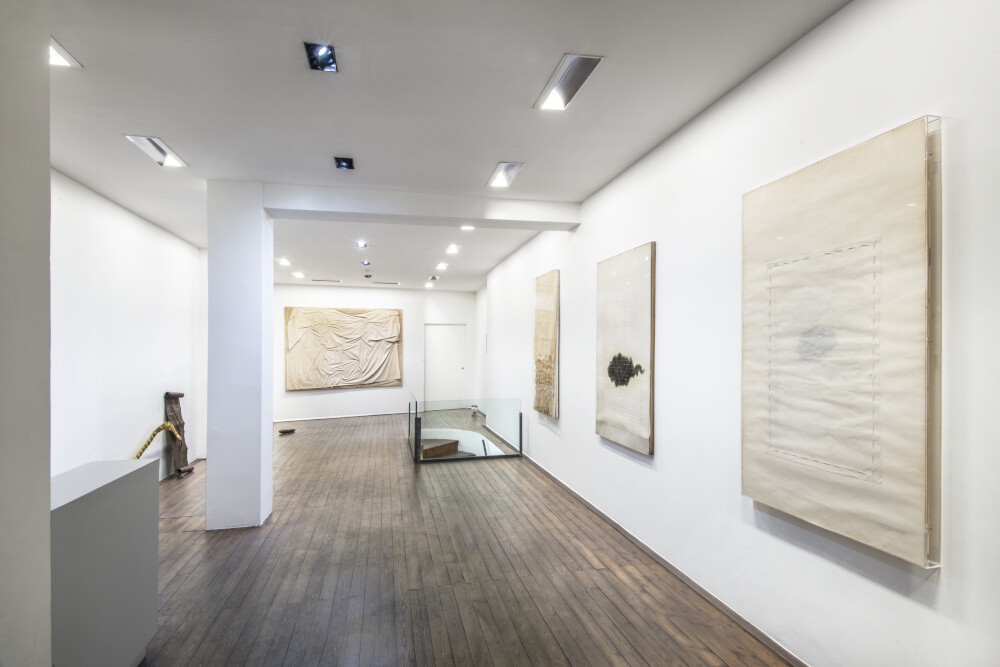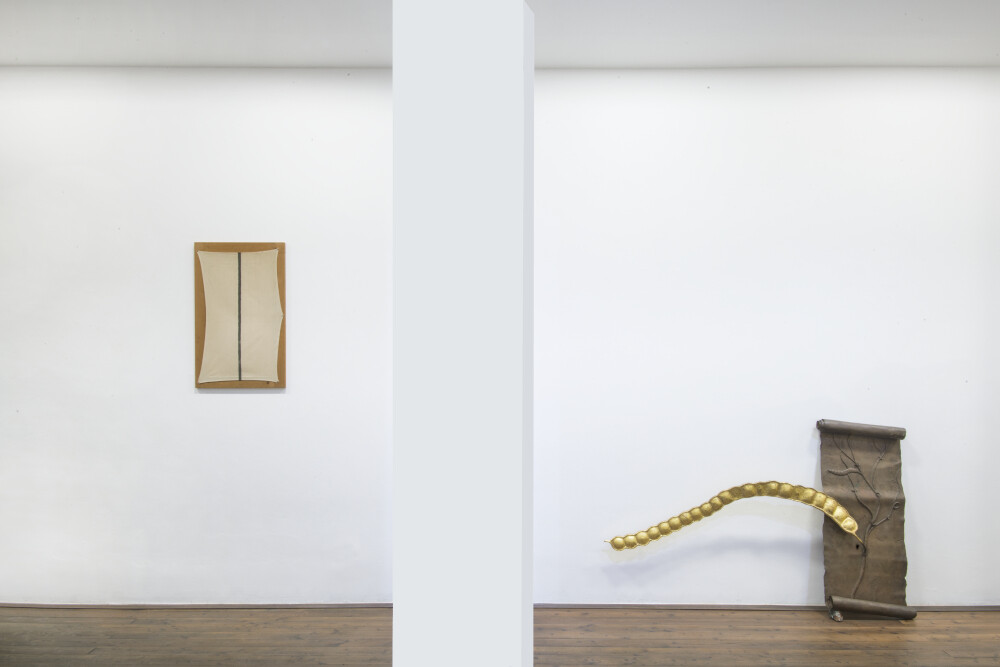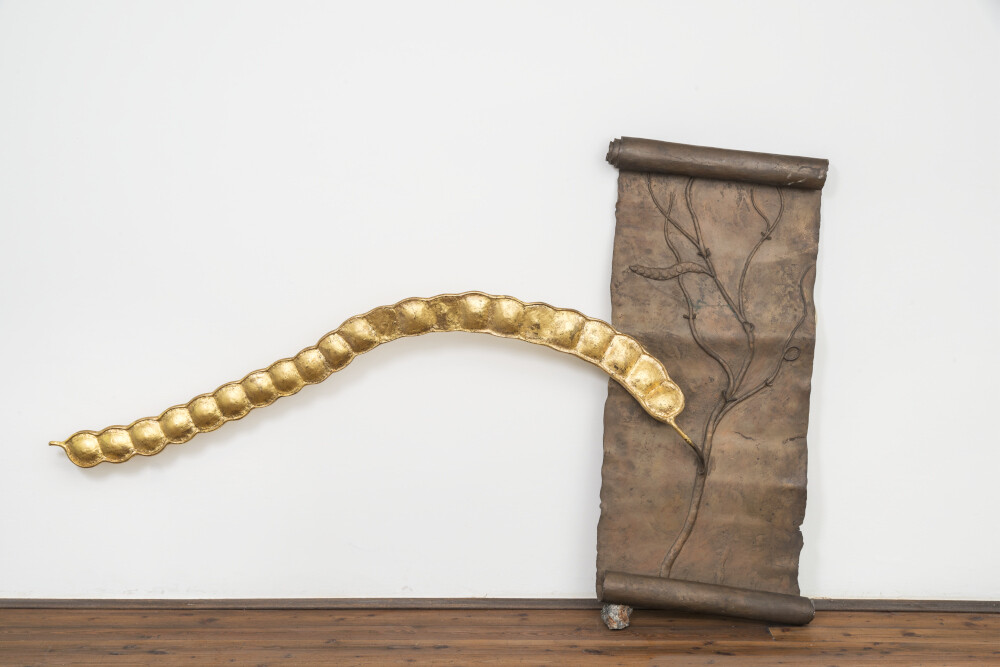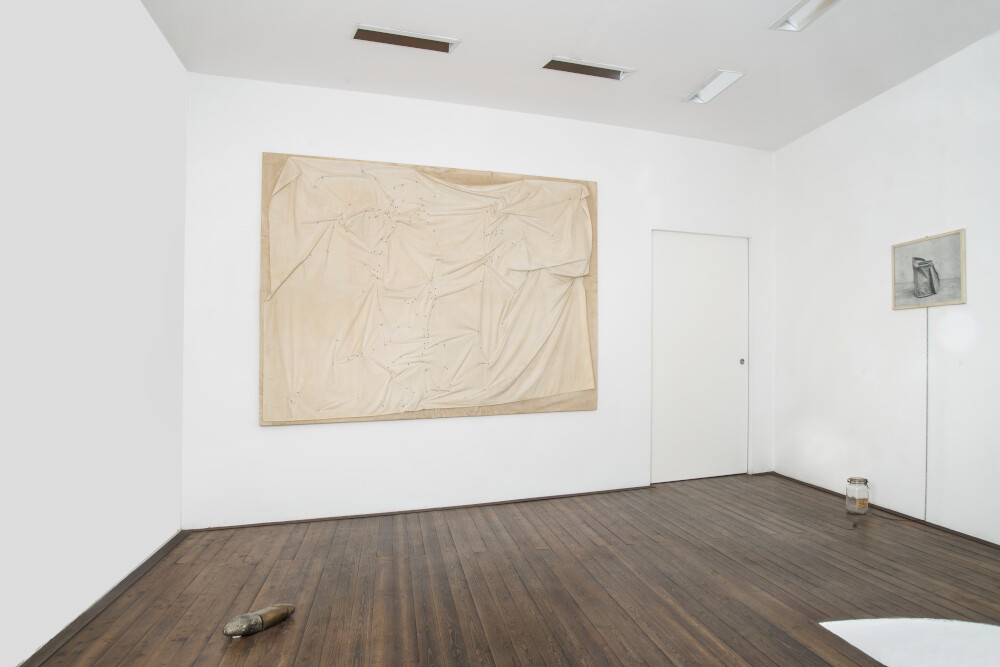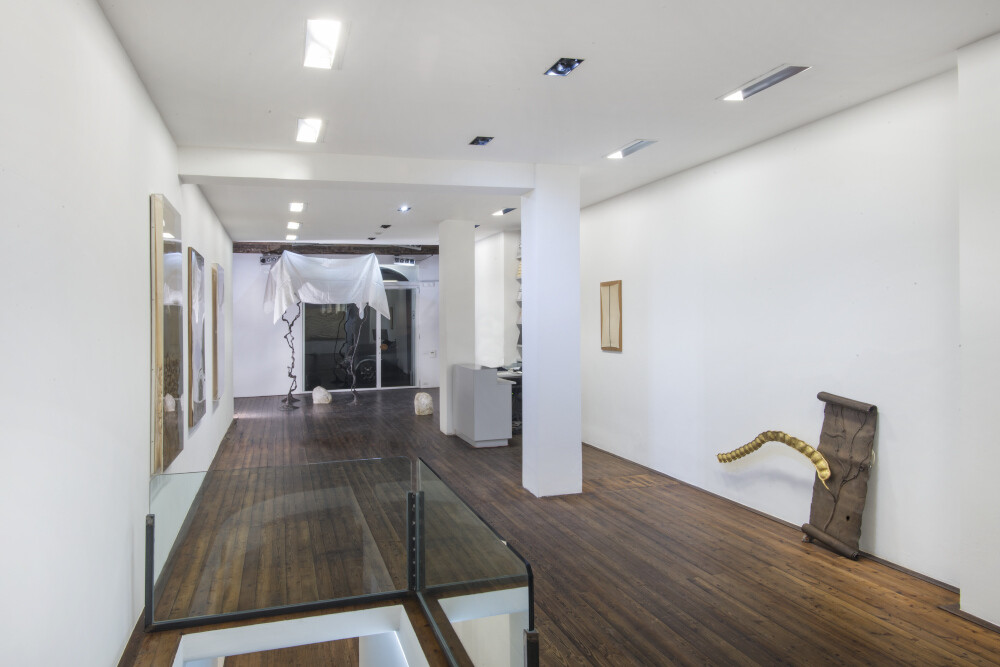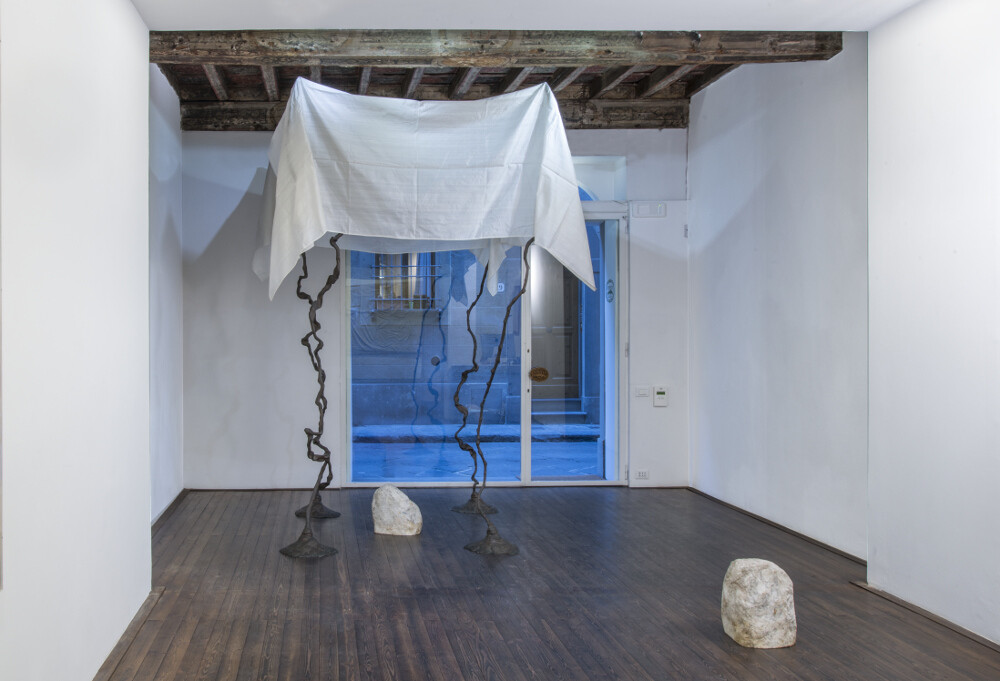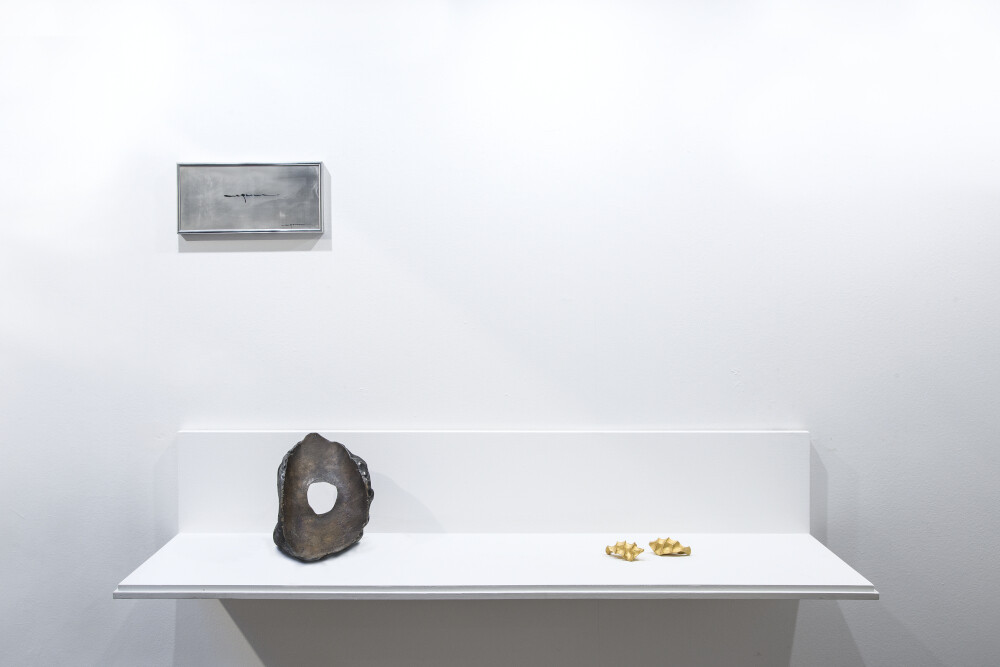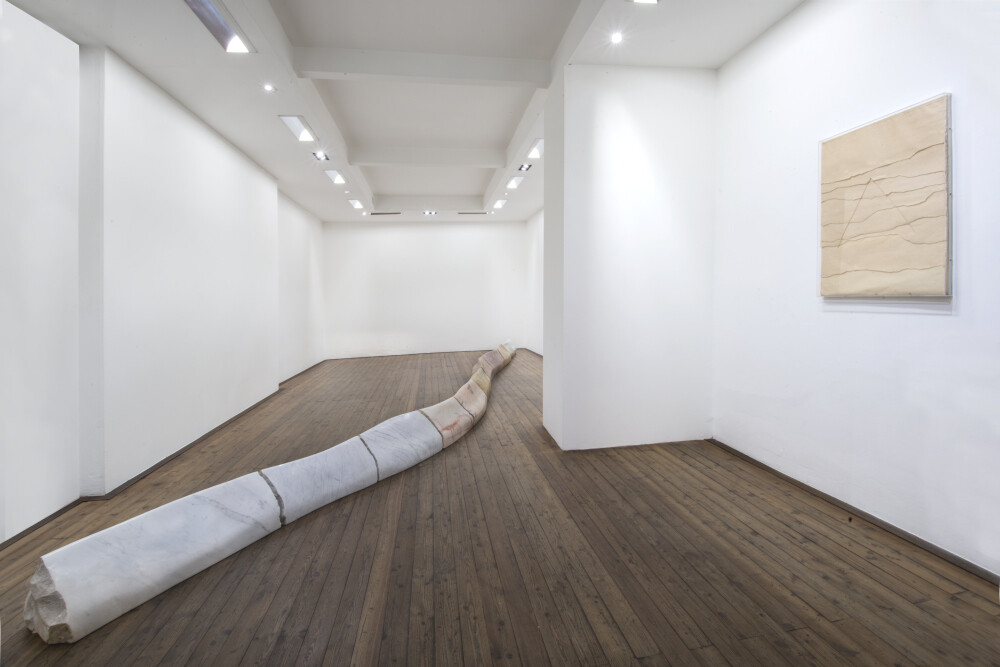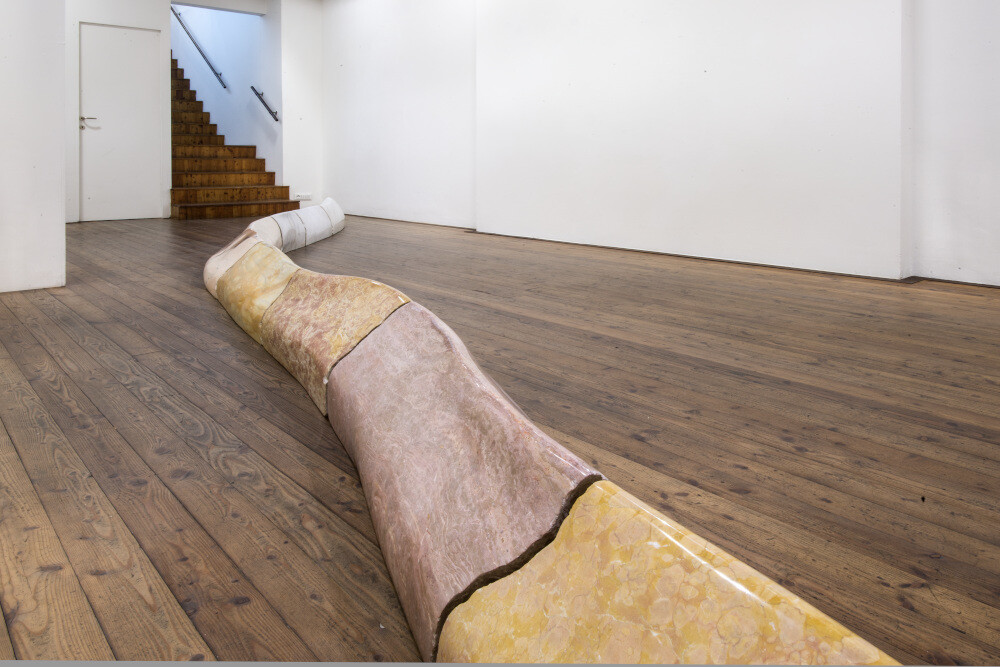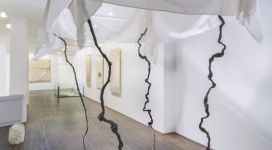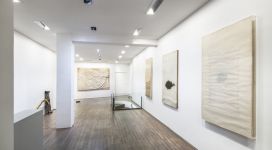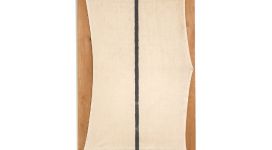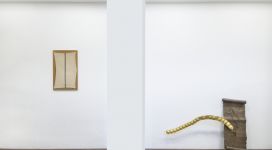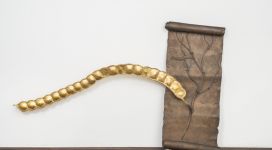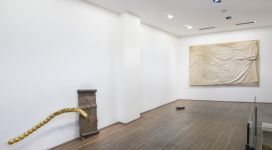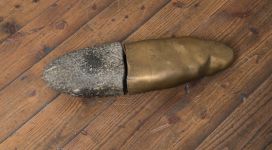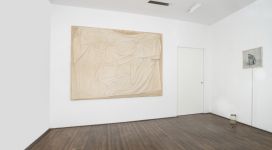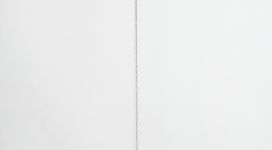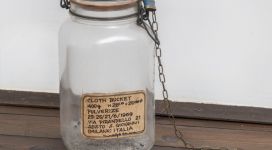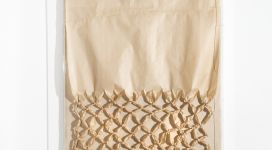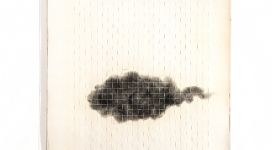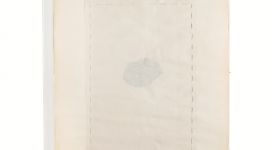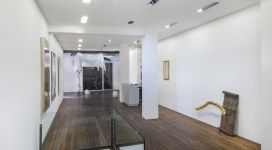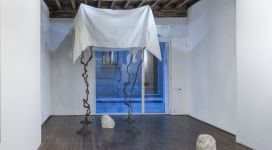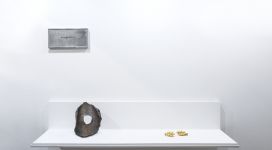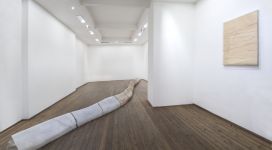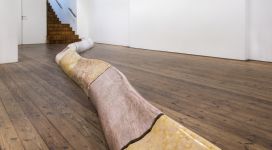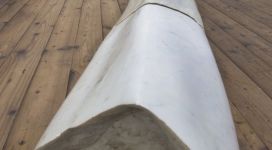| HIDETOSHI NAGASAWA | Biography | |
| the sculpture of the 70s | Exhibition 2005 | |
| curated by BRUNO CORÀ | Catalogs | |
| 1 march – 10 may 2019 |
After the recent death, gallery Il Ponte dedicates to Hidetoshi Nagasawa, artist with whom it collaborated several times starting from the exhibition Interferenza, held in the gallery in October-December 2005, a retrospective focused on a core of works realized from 1969 to 1979 because in these years Nagasawa, who arrived in Italy in 1967, defines in our opinion his way of being an artist.
The exhibition opens with Pulverize – Cloth Bucket from 1969, a conceptual work, coherent with the koine of those years, to which they are bound, in the name of tautology, Firma (1970) that reproduce only the signature of the artist, and Linea (1971), obtained by drawing a black line on a fabric mounted on a wooden frame. The exhibition itinerary then focuses on works in which the sculptural substance takes shape. L’Oro di Ofir from 1971 is the result, then melted into gold, of the space inside the close of the two fists of the artist and represents a primordial form of sculpture of man.
Starting from 1972 the works enter the narrow field of sculpture. Through Un’altra metà (1972) as a testimony of some sculptures that combine different materials, in this case stone and bronze, could have originated the ideation of Colonna (1972), that is one of the masterpieces of Nagasawa’s sculptures from the Seventies. The extended serpentine shape, in fact, composed by eleven sections of different marble, gives substance to a passage from one mode of being to another, Colonna is like the course of an inverted river. The elements that form Colonna don’t have any historical material relation, every section comes from cave far from each other, but the relationship is resonant, each section fits perfectly with the next and the previous one. From 1974 there is Presentazione al tempio, where Nagasawa, with the detection and relocation of hundreds of points on two canvases arranged on a loom, returns the plastic structure of two famous paintings with the same theme, those of Giovanni Bellini and Andrea Mantegna, highlighting the diversity of the numerous details. Almost to settle the historical dispute from the two great artists in relation to the temporal priority of invention of the two works. In Viti di Baghdad (1975) Nagasawa is more explicitly compared to an en plain air environment, considering in the work also the changing action of natural elements that surround it, such as sunlight. Found in the countryside, parts of two grapevines, Nagasawa reproduce it many times with a bronze casting, until he gets the four supports of his canopy. In the center of the canopy covered with a silk fabric held up by the twisted screws there is the half of a stone; the other half is outside. In Rotolo (1979), cast and subsequent gilded bronze casting of a “huge bean (a seed of 1,20 meters) found in Brazil” the pod emerges from the branches of the plant, which is also embossed in bronze on an equally bronze scroll as if its history were pronounced directly by the scroll that tells it. What gives unicity to this sculpture is the abnormality of the dimension of natural manifestation, which reveals that reality is far more amazing than one might imagine.
Finally, the exhibition present four works realized by Nagasawa with paper between 1976 and 1977. They are among the first elaborated with plastic intent, considering the paper as a sculptural material, rather than as a support for drawing and projects. The works in paper in the exhibition in Florence (Lavoro di carta – cucito, 1976, Lavoro di carta – intreccio, 1976, Lavoro di carta – rete, 1977 and Lavoro di carta – triangolo, 1977) have different principle of plastic rendering in ways of concealing, thickening, sectioning, knotting, overlapping, cutting; quality of actions that make the material live without wanting to overcome and distort it.
